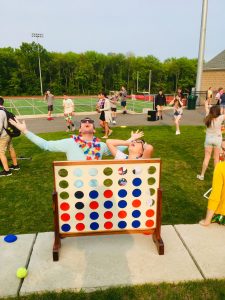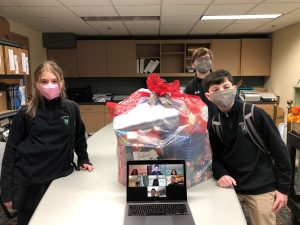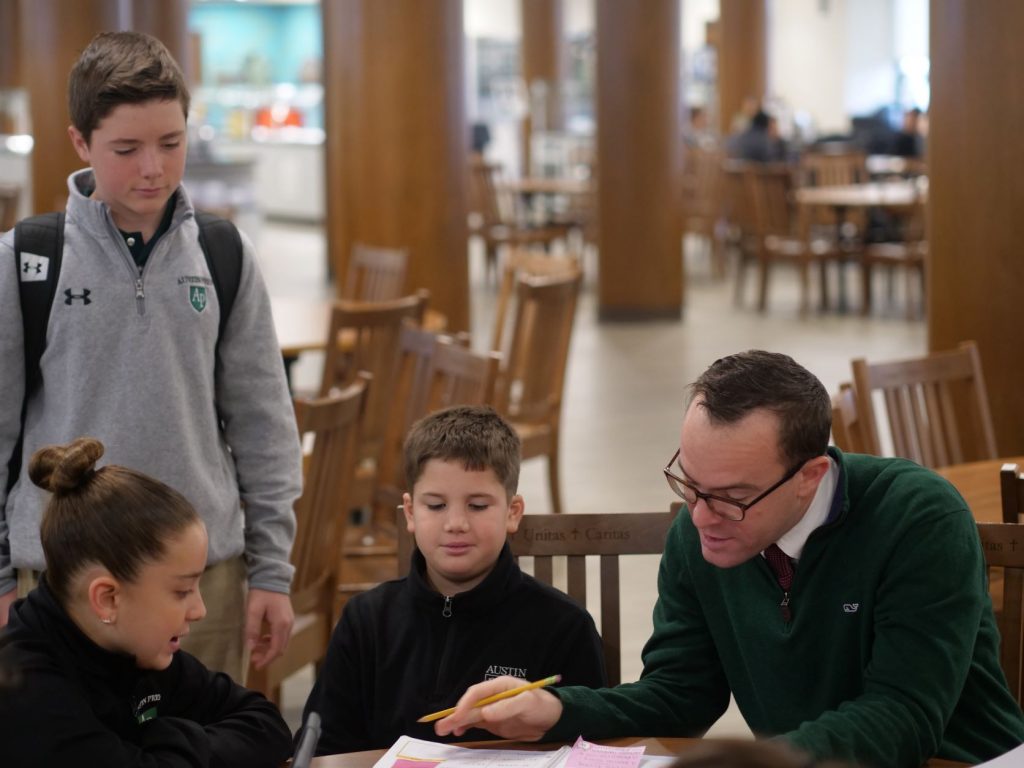How one school’s daily advisory program became a cornerstone of their culture
The evidence is clear that young adolescent students benefit from having their academic and personal development guided by an adult advocate. Many schools promote this goal through an advisory program, or regularly schedule times when students can interact with a small group of peers and an educator to discuss school and personal concerns. Advisory can, and naturally should, look different in each school.
When Austin Preparatory School in Reading, Massachusetts looked to revise their schedule six years ago, they knew they wanted an advisory program that was tailored to their students’ needs as the cornerstone. Michael McLaughlin, the school’s Head of Middle School, specifically hoped to revamp the program to make it an integral part of the daily life of the school. Whereas previous advisory groups had met every seven days, the new schedule prioritized shorter, daily meetings. “We made a commitment as an entire school that this was something valuable and important,” Michael recalls. The resulting program has resulted in a positive impact across the school.
A Program for the Whole Child and Whole School
 Since their school draws from over 60 towns and two states, it was key to help students build relationships with staff and other kids. Austin Prep’s middle school advisories are a blend of 10-12 students from grades six to eight. Students typically journey with the same advisor for their entire middle school experience, which Michael says helps ensure that kids have a mentor and a trusted adult on campus with whom they’re interacting regularly. “That gives them that consistent sounding board,” he explains, “Advisory ensures that every kid on campus is known, supported, and able to be celebrated.”
Since their school draws from over 60 towns and two states, it was key to help students build relationships with staff and other kids. Austin Prep’s middle school advisories are a blend of 10-12 students from grades six to eight. Students typically journey with the same advisor for their entire middle school experience, which Michael says helps ensure that kids have a mentor and a trusted adult on campus with whom they’re interacting regularly. “That gives them that consistent sounding board,” he explains, “Advisory ensures that every kid on campus is known, supported, and able to be celebrated.”
Another key component of the program is that all teachers AND administrators have their own advisory groups. That includes Michael, who loves having an advisory group so he can keep a pulse on the school’s culture and the student experience. And the students love having a senior administrator as their advisor – including the added perk of getting to meet in the school’s conference room.
“Advisory really is part of the culture of Austin Prep,” says Michael, “It calls me from my office or out of other meetings I may be engaged in and interact with why I entered education in the first place: students – and why I got into working in the middle school: they are just so much fun.”
You could see the pride on his face as he spoke about his group: students who built a 3D-printed hand in Robotics, performed in the school’s annual Nutcracker ballet, made the basketball team, or participated in a service project. “As a group, we’re really excited that we won the door decorating contest this past December!”
Key Components of Austin Preparatory School Middle School Advisory Program
|
A Flexible Curriculum
Another key component of the Austin Prep advisory approach is daily meetings. Groups meet for 10-15 minutes, with a break before the next class to allow time for individual check-ins. Whereas the previous approach of 40-minute meetings felt like too much, the shorter, more frequent structure allows for a dedicated daily check-in.
Michael and his Assistant Dean work together closely on curriculum and resources, which includes activities ranging from a group reflection for Martin Luther King Jr. Day to a career cluster inventory exercise scheduled when the upper school students were preparing for their own career day activities. While this provides for commonality, the team builds in flexibility that allows advisors to tailor the time to their students’ individual needs. Michael used a recent advisory meeting to celebrate student birthdays that occurred over winter break and allowed students an open space to share memories from their time away. Around the holidays, advisories collaborate on food drives and other initiatives to enliven students’ capacity to make and be a difference in the service others.
Meeting daily also provides a helpful mechanism to push out important reminders that contribute to a safe and inclusive environment. For example, this time has been used to discuss topics like digital citizenship and responsible use of social media. Michael believes the mixture of students across grades is helpful when tackling some of these weighty topics. Sometimes the more “innocent” sixth-grader can provide a perspective the older students may have forgotten, and an eighth-grader can step into a leadership role and serve as a mentor to the younger students.
Using Advisory to Empower Student Leadership
The flexible nature of the advisory program also provides organic opportunities for students to practice leadership skills. This can include simply allowing them to guide the conversation, such as when the sixth-grade students were approaching their first Latin exam and eighth graders were encouraged to provide preparation strategies that they’d found effective in World Languages. Naturally, the students themselves took the lead in the discussion.
As students grow in their groups, they’re also encouraged to lead advisory activities and bring their own lesson ideas to their advisor. “It’s been really neat to see the eighth graders step up and help set the tone,” says Michael. “That then inspires the younger students. They know it’s cool to do that.”
Advisors and the Parent Relationship
 While the dedicated daily meetings may be short, the advisors are truly a part of the student’s whole school experience. Advisors review all of their advisees’ report card comments to clarify language when helpful and identify areas of concern. This allows advisors to provide very pointed and informed advice to their students. They also meet with parents individually before the parent-teacher conference to give families a holistic picture of how their student is doing. Michael says this helps parents and educators recognize the whole child, not just who that student is in a specific class, adding that, “We focus on the big-picture development of the child and those dimensions that aren’t necessarily classroom related. School is more than about the classes you attend between 8 and 2:30 each day. It’s about all of those pieces of the unwritten curriculum, like advisory, that contribute to developing each middle schooler’s personality.”
While the dedicated daily meetings may be short, the advisors are truly a part of the student’s whole school experience. Advisors review all of their advisees’ report card comments to clarify language when helpful and identify areas of concern. This allows advisors to provide very pointed and informed advice to their students. They also meet with parents individually before the parent-teacher conference to give families a holistic picture of how their student is doing. Michael says this helps parents and educators recognize the whole child, not just who that student is in a specific class, adding that, “We focus on the big-picture development of the child and those dimensions that aren’t necessarily classroom related. School is more than about the classes you attend between 8 and 2:30 each day. It’s about all of those pieces of the unwritten curriculum, like advisory, that contribute to developing each middle schooler’s personality.”
The advisor relationship also provides parents and caregivers with a central point of contact (in addition to Michael as the division administrator). This has been particularly helpful during COVID, where advisors reached out when students were in quarantine to check in on them and ensure that they didn’t slip through the cracks while out of the physical classroom.
Advisory as a Corner Stone
While it continues to grow and evolve, what’s clear is that Austin Prep’s advisory program has indeed become a cornerstone of their success in meeting the academic, social, and emotional needs of their students. “The advisory program is a core component that empowers us to live out our mission as a school,” says Michael. “To inspire hearts to unite, minds to inquire, and hands to serve.”
Michael McLaughlin is the Head of Middle School at Austin Preparatory School in Reading, Massachusetts.
